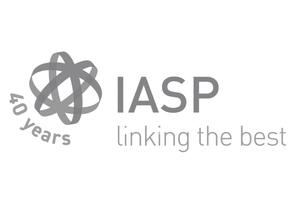21.03.2018
COPD home monitoring gives patients a sense of security and helps them cope with the disease independently
In an ageing population, coping with chronic diseases is becoming a burning issue. One of the three projects developed under the COPD IN FOCUS initiative is “My COPD”, designed to offer a home monitoring solution for patients with severe COPD to prevent exacerbations and to help them manage their disease independently.
Dr. Rain Jõgi, Head of the Lung Clinic of Tartu University Hospital and the chairman of the board of the Estonian Respiratory Society, says that in terms of diseases causing a loss of quality-adjusted life-years, in Estonia COPD is in the first place for men and in the second place for women. “We are used to hearing everybody talking about cardiovascular disease because its mortality rate is high. At the same time, COPD has remained in the background despite it causing a lot of suffering to many patients and it accounting for a large part of the burden of respiratory diseases,” explains Jõgi.
According to Dr. Jõgi, the idea for the project was born out of a necessity. “As is the case with other chronic diseases, there are COPD-related bottlenecks in the healthcare system. Patients consult with medical specialists, but their condition should be monitored by family doctors who, sadly, don’t have enough resources. What’s more, patients are not able to see the family doctor as quickly as needed when they have exacerbations, which means that they don’t seek help on time and instead call the ambulance. Patients admitted to the ER are hospitalised and referred once again to medical specialists,” says Jõgi.
According to the pulmonologist, the healthcare system is currently not very patient-centred and this is what the “My COPD” project is designed to change – the aim is to ensure that patients receive help when needed and are continuously monitored. “We use telemedicine resources to monitor various aspects of COPD and test whether it is possible to use functional tests in a home setting. Questionnaires reveal whether patients’ health and respiratory symptoms are deteriorating or not,” says Jõgi.
Both project parties can proactively contact the other: data forwarded by smart devices or entered by the patient is used to provide ongoing monitoring of the disease. When data indicates that symptoms have deteriorated or lung function has declined, a specialised nurse contacts the patient.
The fact that patients can contact the other party when they need to gives them a sense of security which is no less important. “Patients involved in the project now have someone to turn to. In reality, patients can’t go straight to a specialist who is, in fact, the most competent in providing assistance to patients whose condition is severe and who experience relapses. There is a queue to see their family doctor and patients are reluctant to call the ambulance right away,” admits Jõgi, adding that patients participating in the project can immediately, whenever a problem occurs, contact a nurse who knows how to evaluate their condition and can thus decide what kind of assistance the patient needs.
“The system is designed in such a way to teach patients to cope with the disease independently and to provide them with support, not merely give them theoretical knowledge. For example, at the moment there are training sessions available for patients, but when at home on their own, they are at a loss. It is crucial to provide assistance at the exact moment when problems arise because this makes it easier for patients to learn to manage their disease independently,” he points out.
Presently the project is in a testing phase to make sure that data sharing works and that patients are able to use it. The module has been created in two versions: one for tablets and the other one for smartphones. The solution is being tested by ten patients.
One of the project’s technological partners, Quretec, is testing a solution for tablets which patients can use to keep a diary by answering questions and adding measurements and activity tracker readings. “Medical staff (nurses) are provided with an online user interface which provides an overview of all data categories: each day is marked with an icon indicating the user’s data input level as well as warnings if there are deviations from usual readings. To provide a visual representation of the data, a visualisation solution developed by Quretec and STACC is used and it has received positive feedback from users,” says Margus Jäger, Quretec’s board member.
Cognuse, the other health technology company, is testing the alternative version for smart devices – a phone application with a robot voice generator that reminds patients about their health- and treatment-related activities. “We have had patients who don’t want to use a smart device. So, we came up with the idea of a robot voice generator to avoid isolating these patients – the robot calls a patient and asks a standardised set of questions about the symptoms experienced in the last 24 hours or about the last time they had to use their quick-relief medication,” explains Julius Lill. The data entered using a telephone’s keyboard is also forwarded to a nurse’s desktop, providing a quick overview of a patient’s condition and making it possible to take necessary measures.
Impact of COPD on healthcare costs
About one third of all patients hospitalised in the Lung Clinic have a COPD diagnosis which is due to the fact that a COPD relapse can be a primary or a concomitant diagnosis. Of those who receive outpatient care at the clinic, some 15% have a diagnosis of COPD. “In terms of the number of visits, the figure seems to be a minor one, but at the same time at-home oxygen and ventilation therapy makes up half of our budget for outpatient care. Half of those patients have COPD. The resources we spend are quite big,” acknowledges Jõgi.
He compares COPD exacerbations with a cardiac patient’s heart attack – the patient’s health deteriorates fast and lost function is never fully recovered. “If we could prevent relapses and thus make sure that patients are able to cope with their disease at home, independently, it would have a significant effect on the healthcare system,” he admits.
Jõgi says that they can talk about project outcomes and further steps to be taken only after the pilot study has been finished. “When all technical issues have been ironed out, we have to start thinking about how to implement the solution in real-life conditions. Currently an ad hoc team is working under the project, but if we would like to provide all COPD patients with the solution, we need to set up a proper structure to make it possible for patients to contact someone. One option is to launch a 24-hour helpline.
It is another issue whether the design of such a service should be based on a specific disease or a type of service. A solution based on a specific disease could operate out of a private clinic, while it would be reasonable to provide a solution for different kinds of patients at a medical centre,” says Jõgi, commenting on potential future scenarios.
The “My COPD” solution team: the Lung Clinic of Tartu University Hospital staff and developers of the technological solution from the companies Cognuse and Quretec.

















